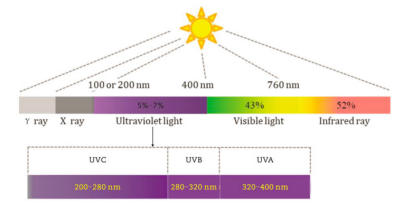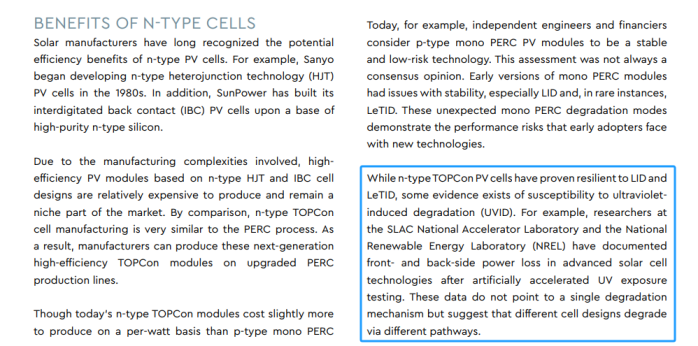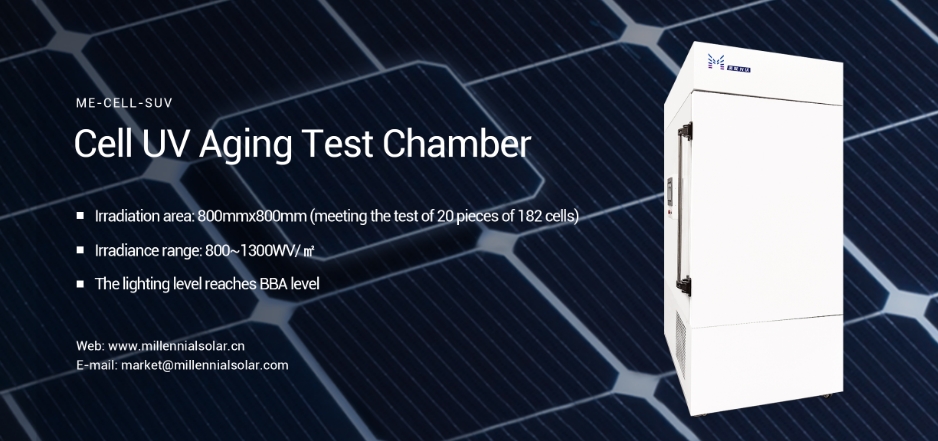
Quantum Efficiency Tester
PL/EL Integrated System
PV-Reflectumeter
3D Confocal Microscope
In-Line Four Point Probe Tester
Four Point Probe Tester
In-Line Thin Film Thickness Tester
Raman Spectrometer
FTIR Spectrometer
Spectrophotometer
Automatic Spectroscopic Ellipsometer
Contact Resistance Tester
Ultra depth of field 3D microscope
Auto Visual Tester
VMM PV Vision Measuring Machine
Solar Cell Horizontal Tensile Tester
Steady State Solar Simulator for Solar Cell
Solar Cell UV Aging Test Chamber
Solar Cell Comprehensive Tensile Tester
Visual Inspection Tester
Wet Leakage Current Tester
PV Module EL Tester
PV Module UV Preconditioning Chamber
Steady State Solar Simulator for PV Module
Current Continuous Monitor
Potential Induced Degradation Test
Bypass Diode Tester
LeTID Test System
Reverse Current Overload Tester
Impulse Voltage Tester
Hipot Insulation Tester
Ground Continuity Tester
Hipot Insulation Ground Tester
Damp Heat Test Chamber
Humidity Freeze Test
Thermal Cycle Test Chamber
Dynamic Mechanical Load Tester
Static Mechanical Load Tester
Hail Impact Tester
Robustness of Termination Tester
Module Breakage Tester
Cut Susceptibility Tester
Peel Shear Strength Tester
Universal Testing Machine (Single-arm)
Universal Testing Machine (Double-arm)
Glass Transmittance Tester
Acetic Acid Test Chamber
EVA Degree of Crosslinking Test System
Junction Box Comprehensive Tester
Drop ball tester
Semi-automatic scanning four-probe tester
Stylus Profilometer
Maximum Power Point Tracker
Perovskite Glass Transmittance Tester
Perovskite P1 Laser Scribing Multifunctional Testing Machine
Perovskite Online PL Tester
Perovskite Online Sheet Resistance Tester
Online Perovskite Film Thickness Tester
Perovskite Process Inspection Workstation
Portable IV Curve Tester
Portable EL Tester
Portable Thermal Imaging Tester
Solar Module Multi-Channel Testing System
PV Inverter Power Quality Tester
Drone EL Tester
IV Tester
IVEL Cell Sorting Machine
TOPCon Cell UV Attenuation Degradation Risk
Date : 2024-04-15Views : 150
With the rapid development of the photovoltaic industry, the industry's quality requirements for solar cells and photovoltaic modules are getting higher and higher. When photovoltaic modules are actually used in real environments, they will be affected by ultraviolet radiation, mechanical loads from wind and snow, wind and sand impact, acid rain corrosion, etc.
With the rapid development of the photovoltaic industry, the industry's quality requirements for solar cells and photovoltaic modules are getting higher and higher. When photovoltaic modules are actually used in real environments, they will be affected by ultraviolet radiation, mechanical loads from wind and snow, wind and sand impact, acid rain corrosion, etc.

On June 29, 2022, the "PV Module Index 2022" study released by the U.S. Renewable Energy Testing Center (RETC) pointed out that cells manufactured with TOPCon technology are affected by ultraviolet (UV) radiation and may be at risk of premature degradation.
In the industry trend column, RETC introduced the industry's accelerating iteration to N-type technology, and introduced the advantages and future prospects of N-type cells. However, it also proposed the potential risks of new technologies, especially N-type TOPCon. Effects on cells during ultraviolet attenuation testing (UVID). The original text is as follows:
Risks of early deployment of TOPCon
Most analysts expect that based on these performance advantages, modules with N-type TOPCon cells will rapidly increase market share. However, emerging photovoltaic cell technologies always carry potential risks, including the possibility of undiscovered degradation mechanisms before large-scale deployment.
Relative to p-type single PERC cells, the main material advantage of n-type TOPCon cells is a lower degradation rate due to reduced susceptibility to light-induced degradation (LID) and high-temperature-induced degradation (LeTID). Other advantages may include a higher duplexity factor, and improved performance in low-light and high-temperature conditions.
RETC noted that although N-type TOPCon photovoltaic cells have been shown to be insensitive to LID and LeTID, there is some evidence that they are susceptible to ultraviolet attenuation testing (UVID). For example, researchers at the SLAC National Accelerator Laboratory and the National Renewable Energy Laboratory (NREL) have documented front- and back-side power losses in advanced solar cell technologies after artificially accelerated ultraviolet exposure testing. These data do not point to a single degradation mechanism. But it shows that different cell designs degrade through different pathways.

Meanwhile, VDE Americas’ Sauer said, “As part of the technical due diligence, I recommend accelerated UVID testing of new N-type modules. If the cell passivation layers are not properly adjusted, they may break down under UV exposure. Given the high risks involved, RETC is independently conducting highly accelerated UV testing of a variety of next-generation components designed with N-type cells. "
UV aging experiments can be used to detect whether solar cells and photovoltaic modules have anti-attenuation capabilities when exposed to high humidity and high UV radiation sites.
Cell UV aging test chamber

E-mail: market@millennialsolar.com
The Millennial cell UV aging test chamber monitors the changes in cells under light by simulating different lighting conditions. It can be used for photovoltaic cell product development and quality control or to evaluate changes in the durability of cells after composition.
●Irradiation area: 800mm×800mm (satisfies the test of 20 182 cells)
● Irradiance range: 800~1300W/㎡
● The lighting level reaches BBA level
● Equipped with an independent system that can independently adjust the irradiation intensity of each light source and the overall irradiation intensity
Millennial Solar is committed to the development of PERC, TOPCon, HJT, XBC, perovskite/tandem solar cell process control and testing equipment, and provides high-efficiency solar cell and module testing equipment and intelligent detection and analysis system solutions. The company has a complete testing center with a total value of more than 20 million yuan. The testing center can improve the testing of the entire cell process and the reliability testing of photovoltaic modules that comply with IEC standards after packaging is completed.

































































